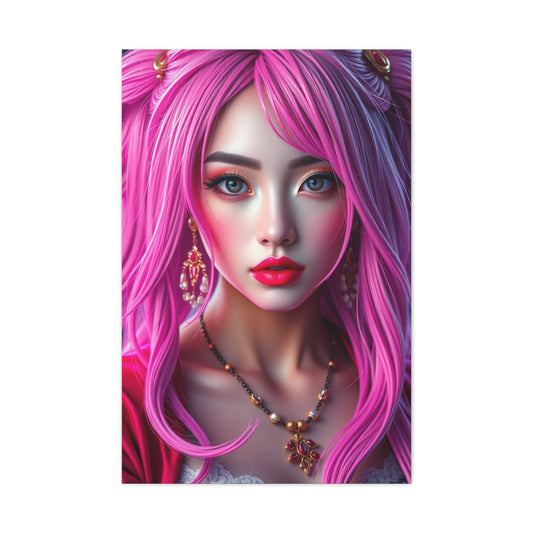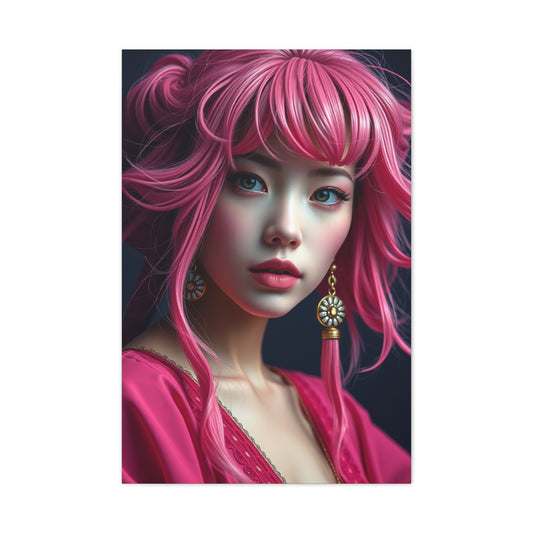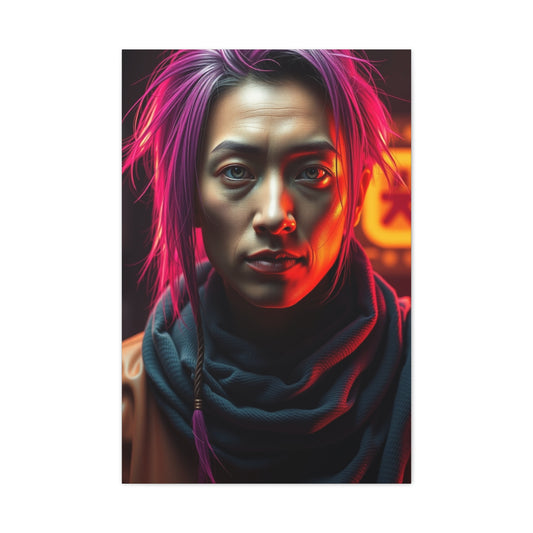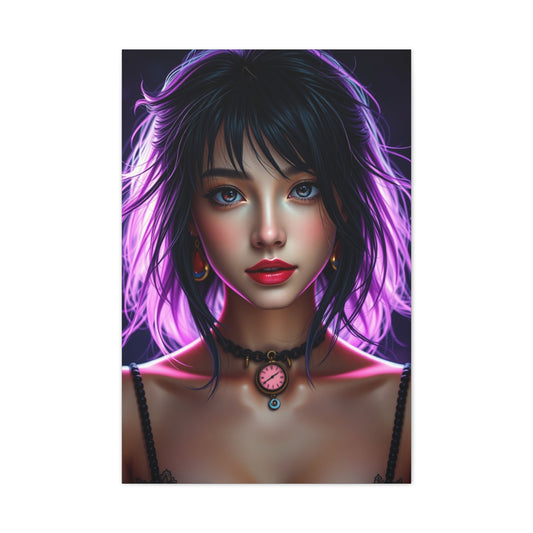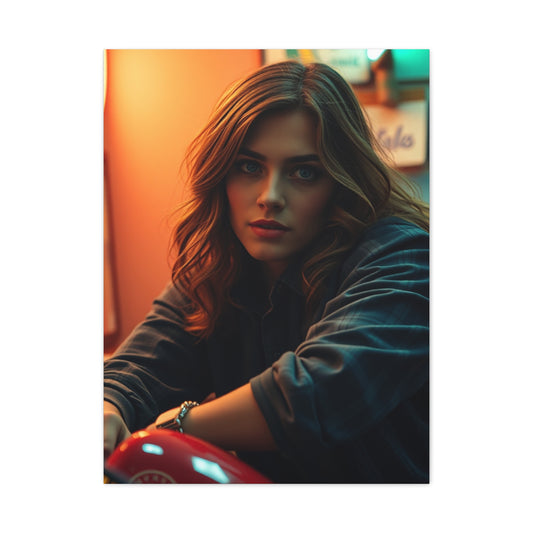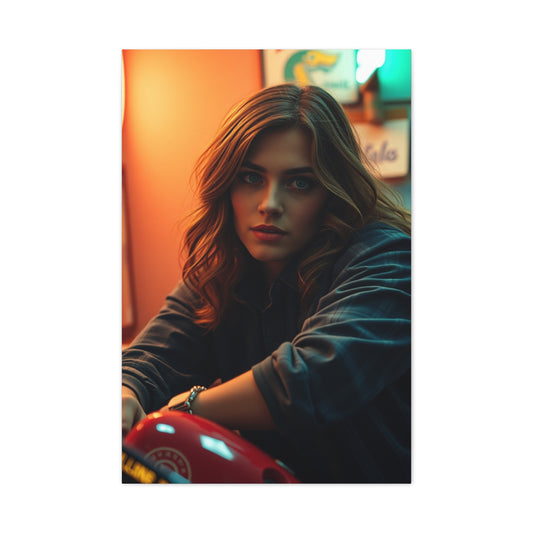Infusing a home with abstract wall art is a profound method of expressing individuality, imbuing each space with emotional resonance and visual allure. Unshackled from the constraints of realism, abstract compositions are marvels of creativity that speak to both the heart and the intellect. Whether comprised of fluid brushstrokes, erratic geometry, or minimalist gestures, this genre of artwork thrives on interpretation—inviting viewers to see not just what is, but what could be.
Abstract artwork functions like an emotional prism within interior design, bending ambiance to evoke introspection, joy, contemplation, or vibrancy depending on the chosen piece. Its inherent ambiguity makes it supremely adaptable. Whether displayed in a rustic cabin adorned with organic textures or a minimalist loft graced with clean lines, abstract pieces offer a transcendent visual dialogue.
Aesthetic Synergy Across Styles
One of the most intriguing aspects of abstract art is its stylistic flexibility. Unlike representational pieces that might clash with certain design schemes, abstract artwork melts effortlessly into any interior language. Within a Scandinavian-inspired setting, a monochromatic piece featuring delicate gradients can lend a whisper of moodiness. In contrast, a mid-century modern living room may benefit from a vivid burst of chromatic chaos that enlivens muted upholstery and angular furnishings.
In farmhouse décor, where reclaimed wood and natural fibers often dominate, abstract art offers a compelling juxtaposition. The asymmetry and free-form nature of the artwork add depth to otherwise symmetrical and orderly designs. Even in traditional interiors, where ornamental molding and antique accents reign supreme, a single abstract canvas can provide a breath of fresh air, bridging eras and introducing contemporary verve.
Evoking Emotion Through Abstract Expression
Abstract wall art doesn’t just decorate—it communicates. While a landscape might depict a field and a portrait may mirror a face, abstract art speaks in a more mysterious dialect. Its swirling patterns, splattered pigments, and exaggerated proportions trigger emotions at a subconscious level. Viewers may feel a sudden sense of nostalgia, serenity, or invigoration without understanding exactly why.
This emotional potency makes abstract artwork particularly suitable for areas of introspection or connection, such as bedrooms, reading nooks, or dining rooms. A painting composed of mellow lavenders and diluted grays can evoke a sense of calm in a meditation corner, while a bold, erratic piece in high-saturation hues may encourage lively conversations in a social gathering space.
Playing with Scale, Texture, and Composition
When incorporating abstract art into your home, consider more than just color and pattern. Scale plays a vital role. A single oversized canvas can anchor an entire room, becoming a focal point that balances furnishings and spatial dynamics. Conversely, a triptych or gallery wall of smaller abstract prints can create rhythm and movement, leading the eye from one wall to another.
Texture is another powerful element. Look for abstract pieces that feature impasto techniques, where paint is thickly applied to create a tangible relief. These add a tactile richness, particularly effective when juxtaposed against smooth surfaces like polished marble or metal. Pairing a heavily textured canvas with minimalist furniture creates a striking interplay between chaos and control.
|
Related Catagories: |
The composition of the artwork itself also guides the viewer’s experience. Diagonal strokes evoke momentum, circular forms suggest continuity, and vertical lines can convey strength or ascension. Choosing artwork that complements the spatial composition of a room ensures cohesion and harmony.
Choosing the Right Abstract Piece for Each Room
Different spaces call for different abstract narratives. In the living room, consider pieces that reflect the energy of the household—dynamic, vibrant, and full of movement. Abstract works here can include bold color fields, kinetic brushwork, or even collaged textures that speak to the layered complexities of communal life.
In contrast, bedrooms demand introspective and soothing compositions. Select abstract paintings with a muted palette—powdery blues, dusky pinks, warm taupes—and organic forms that mirror the tranquility one seeks in personal spaces. A soft gradient or dreamy atmospheric abstraction can act as a visual lullaby.
Kitchens and dining areas, often considered the heart of the home, can benefit from cheerful and conversation-sparking pieces. Opt for art that incorporates warm tones like ochre, coral, or cinnamon, which naturally complement culinary environments. Abstract works featuring circular or spiral motifs can subtly nod to the cyclical nature of meals and family gatherings.
Abstract Art as a Reflection of Self
One of the most liberating elements of abstract wall art is its capacity for personal meaning. Unlike figurative art, which imposes a narrative, abstract pieces invite interpretation. This makes them ideal for anyone seeking to curate a space that reflects inner experiences, beliefs, or transitions.
You might gravitate toward a piece that mirrors your mood or one that symbolizes a personal journey. Abstract art becomes a reflection of your evolving identity—never static, always open to reinterpretation. As such, it is deeply resonant in spaces of personal growth, like home offices, studios, or reading rooms.
Wall Art as the Gateway to Abstract Sophistication
Wall art has revolutionized how we interact with abstract pieces. Once relegated to galleries and museums, abstract art is now accessible and customizable through Wall art, which offers a diverse spectrum of sizes, finishes, and formats to suit every interior. Whether you’re looking for a stretched canvas, a framed print, or a multi-panel display, these offerings provide an easy pathway to bring museum-worthy elegance into domestic spaces.
By curating from Wall art’s eclectic array, homeowners can find the perfect expression for each corner of their home—pieces that whisper, roar, and everything in between. The convenience of at-home selection and delivery means your next transformation is only a few clicks away.
Curate a Visual Symphony with Abstract Accents
Ultimately, abstract wall art is more than a visual addition—it’s an emotional signature woven into your space. It offers homeowners the chance to craft a dwelling not just of design, but of feeling. From tranquil watercolors that quiet the mind to explosive compositions that electrify the senses, abstract art serves as the soul of a well-considered room.
Whether you are embarking on a complete renovation or seeking to reinvigorate a single space, let abstract wall art lead the way. Through thoughtful selection, imaginative placement, and a touch of personal symbolism, your home becomes not just a structure—but a sanctuary of self-expression.
The Enduring Brilliance of Leonid Afremov
In a world saturated with passing design fads and ephemeral aesthetics, few artistic voices cut through the noise with such vivid clarity as Leonid Afremov. A master of color, texture, and emotion, Afremov’s work transcends traditional boundaries and invites viewers into a luminous realm of memory, sentiment, and sensory delight. For those seeking to enrich their interiors with art that possesses both narrative depth and visual vibrancy, Afremov’s oeuvre stands as an enduring testament to the transformative power of abstraction.
A Symphony of Color and Emotion
Leonid Afremov's paintings are not merely canvases of color—they are symphonic compositions that pulsate with feeling. Using a palette knife as his principal tool, Afremov sculpted every brushstroke with remarkable clarity and precision, creating layers of texture that almost leap off the canvas. His saturated color schemes—often featuring kaleidoscopic reflections of rain-slicked streets, lamplit avenues, and nostalgic park benches—transform ordinary urban scenes into poetic tableaus.
Each piece evokes a sense of warmth, introspection, and wanderlust. There is an unmistakable emotional architecture in his work, one that guides the viewer through memories both familiar and imagined. These qualities make his paintings particularly well-suited for domestic interiors, especially living rooms or reading nooks where quiet contemplation and aesthetic ambiance are equally treasured.
From Canvas to Home: The Allure of Large-Scale Wall Art
Leonid Afremov’s artistry finds a new rhythm when translated into expansive formats. A large-scale Wall art print of one of his masterpieces doesn’t just decorate a space—it anchors it. These pieces become the visual epicenter of a room, drawing the gaze and inviting conversation. Whether mounted above a modern sofa or used to punctuate a hallway with dramatic flair, Afremov's luminous cityscapes can redefine the entire atmosphere of a home.
For even more visual impact, consider a multi-panel display. Diptychs and triptychs break the artwork into harmonious segments, offering a dynamic sense of flow across the wall. This approach works particularly well in open-concept spaces where traditional single-frame art might appear dwarfed or out of proportion.
Aesthetic Versatility Rooted in Nostalgia
One of the most captivating elements of Afremov’s style is its versatility. Despite the intensity of his hues, the underlying themes—solitude, reflection, connection—are universally resonant. His works blend effortlessly with both contemporary and traditional interiors. Picture a minimalist Scandinavian living room: neutral walls, light oak furniture, and soft grey textiles. Now, imagine one of Afremov’s vivid city scenes adding a burst of chromatic vitality, its reflections flickering like memories on water. The juxtaposition is both harmonious and invigorating.
In more classic settings, such as homes with rich wood finishes, ornate mouldings, or vintage décor, his pieces can add a fresh twist without disrupting the room’s integrity. The nostalgic undertones of his subject matter—vintage streetlamps, timeless lovers under umbrellas—echo across generations, making his art a bridge between eras.
Beyond Décor: Art as a Conduit of Personal Connection
Choosing a piece by Leonid Afremov isn’t just a design decision—it’s a personal one. His paintings often strike an emotional chord, resonating with viewers in ways that feel intimate and evocative. A single canvas may remind someone of childhood walks in autumn rain, a long-forgotten travel experience, or a fleeting romantic encounter.
This emotional timbre is what elevates Afremov’s work beyond mere decoration. It becomes a visual diary, a keeper of unspoken memories. Placing such a piece in your home infuses the space with an almost spiritual dimension, one that encourages mindfulness and emotional authenticity.
Harmonizing with Other Design Elements
To amplify the impact of an Afremov-inspired Wall art installation, consider the surrounding environment. Use complementary lighting—soft, ambient bulbs with warm color temperatures—to enhance the vibrancy of the hues without overwhelming them. A matte or soft-gloss finish on the print can help maintain the tactile quality of the original palette-knife technique.
Pair the artwork with subtle textiles: a velvet throw in a jewel tone, a woven area rug with intricate yet subdued patterns, or sheer curtains that catch the light just enough to echo the glow of the painting. Furniture in natural materials—walnut, brushed metal, or rattan—can serve as grounding elements that frame the brilliance of the art without competing for attention.
The Legacy of a Modern Master
Though Leonid Afremov passed in 2019, his legacy continues to flourish in homes, galleries, and digital spaces across the globe. His work defies easy classification—it is both impressionistic and abstract, emotionally raw and technically refined. His vision has inspired countless emerging artists and collectors who seek more than just visual pleasure from their art.
Afremov’s commitment to accessibility—selling directly to admirers without gallery markups—was revolutionary in its own right. It democratized art collecting and allowed individuals from all walks of life to own meaningful, museum-quality work. Today, his pieces are still revered not only for their beauty but for their authenticity and heartfelt genesis.
Decoding Abstract Art: Beyond the Boundaries of Visual Reality
To many, abstract art initially appears perplexing—an amalgamation of brushstrokes, hues, and forms that lack concrete representation. Yet, within this perceived ambiguity lies a deeply expressive language. Abstract art, also referred to as non-representational or conceptual art, liberates itself from the constraints of literal depiction. Rather than echoing the physical world, it seeks to mirror internal states of being—emotion, thought, memory, and mood—through the unspoken dialogue of color, form, and spatial rhythm.
The Departure from Realism: A Creative Evolution
Emerging as a defiant departure from classical realism in the 19th century, abstract art began to gain momentum as artists turned away from portraying landscapes, portraits, and still lifes with photographic precision. Instead, they sought to explore the subconscious and emotional undercurrents that realism often obscured. Visionaries such as Wassily Kandinsky, Kazimir Malevich, and Hilma af Klint delved into the metaphysical realm, using abstraction as a tool to channel spirituality and inner truth onto canvas.
This radical divergence from representational art was not an abandonment of skill but a redefinition of purpose. It marked a new era in which visual art expanded into philosophical terrain. Abstract artists chose to communicate meaning through visual cues rather than literal narrative, encouraging the observer to engage actively and intuitively with the work.
Emotion Through Elemental Expression
In its essence, abstract art is an emotional conduit. Its visual vocabulary is constructed from a nuanced symphony of elements: bold or muted color palettes that evoke sensation, sweeping lines that suggest motion or serenity, textured surfaces that awaken tactile perception, and compositional asymmetry that reflects the chaos or order of human experience. These elements do not dictate interpretation but rather invite a multifaceted conversation between viewer and canvas.
Unlike traditional art, which often conveys a singular story or subject, abstract pieces remain intentionally open-ended. A crimson triangle juxtaposed with a swirling graphite line may evoke angst, passion, or triumph depending on the viewer’s personal lens. The ambiguity is purposeful—it democratizes meaning, allowing everyone to find their own resonance.
Abstraction as Introspection
Where realism often documents the outer world, abstract art functions more like an introspective mirror. It acts as a visual diary, revealing the artist’s psychological state, spiritual journey, or philosophical inquiry. In this way, abstract works are deeply autobiographical yet simultaneously universal. The absence of recognizable imagery compels audiences to engage with the intangible—feelings that defy words, memories half-forgotten, or thoughts unspoken.
As abstract art encourages viewers to project their own experiences onto the canvas, it fosters a deeply personal connection. This quality makes it an enduring choice in contemporary interior design, where art is meant not only to adorn but to provoke thought, emotion, and atmosphere. When incorporated as Wall art, abstract pieces bring a sense of dynamic energy or serene introspection to the room, depending on their tone and execution.
Cultural Movements and the Rise of Non-Representational Art
Abstract art did not emerge in a vacuum. It evolved alongside dramatic societal shifts—industrialization, world wars, and philosophical movements like existentialism and psychoanalysis. These cultural undercurrents challenged traditional norms, and abstract art served as both a reaction to and a reflection of this changing world.
The Cubist deconstructions of Picasso and Braque, the gestural energy of Jackson Pollock’s action painting, and the spiritual geometry of Kandinsky each responded to the uncertainties of their time. Their abstract creations sought truth not in what could be seen but in what could be felt and experienced internally.
Contemporary Perspectives: Abstract Art in the Modern World
Today, abstract art continues to flourish in homes, galleries, and public spaces around the globe. Its timeless appeal lies in its capacity for reinvention. Minimalist abstracts, with monochrome color fields and geometric clarity, lend themselves beautifully to modern interiors. In contrast, fluid art and gestural abstraction speak to a more organic, expressive sensibility, complementing bohemian or eclectic aesthetics.
As a form of Wall art, abstract creations offer more than visual pleasure—they bring psychological depth and spatial harmony. Carefully curated pieces can anchor a living room, elevate a hallway, or invigorate a workspace. The versatility of abstraction allows it to be both statement-making and understated, depending on the selection and placement.
Interpretation as an Act of Creation
One of the most compelling aspects of abstract art is the participatory role it grants the viewer. Unlike figurative works that spell out their subjects, abstract paintings demand active engagement. They challenge you to look beyond surface details and trust your instinctive response. This interaction becomes an act of personal creativity—each interpretation unique to the beholder.
This phenomenon contributes to abstract art's wide appeal in therapeutic and educational settings. Whether used in expressive art therapy or as a teaching tool for emotional literacy, abstraction nurtures intuition, self-awareness, and empathy. In this way, abstract works transcend their material form to become instruments of inner exploration.
Why Abstract Art Belongs in Every Home
When thoughtfully integrated into domestic spaces, abstract art enriches more than just visual aesthetics. It creates ambiance, stirs conversation, and reflects the sophisticated sensibility of the dweller. A well-placed abstract canvas can energize a dull corner, soften sharp architectural lines, or create a contemplative nook within a busy household.
Amplifying Interiors with Color-Infused Abstract Centerpieces
When it comes to crafting a space that resonates with personality and vibrancy, few design elements wield as much transformative power as abstract wall art infused with bold color palettes. While minimalism and neutral tones often dominate interior design conversations, color-driven centerpieces emerge as expressive antidotes—breathing life, emotion, and unspoken narratives into otherwise conventional rooms. These chromatic compositions serve as catalysts for energy and imagination, shifting the mood of a space with a single glance.
Incorporating vivid abstract pieces is not a matter of chaos or overstatement. On the contrary, they introduce nuanced depth, visual rhythm, and emotional cadence. Far from overwhelming, these artworks orchestrate harmony between boldness and sophistication, inviting the observer into a kaleidoscopic dialogue between hue, form, and space.
The Psychological Alchemy of Color in Design
Color has long been recognized as a powerful emotional stimulant. Abstract artwork, unconstrained by literal representation, channels that energy into expressive forms that speak directly to the subconscious. A crimson explosion against a canvas might invoke passion and movement, while layers of cobalt, tangerine, and chartreuse may energize the room with their effervescent synergy.
By integrating Wall art that centers on dynamic color palettes, homeowners can sculpt their interior atmosphere with precision. Whether you’re seeking serenity, enthusiasm, creativity, or introspection, there is an abstract piece that echoes your desired ambiance. This makes color-centric wall décor not just an aesthetic choice, but an intentional act of emotional curation.
Creating Visual Gravity with a Single Stroke
In interiors where color is otherwise sparse, an abstract artwork saturated with vibrant tones acts as a gravitational force. It anchors the space, giving the eye a destination while harmonizing with subtler design elements. Whether installed above a neutral-hued sofa or at the end of a minimalist hallway, the boldness of the piece infuses the area with direction and purpose.
One of the great virtues of abstract design lies in its ability to defy convention. There are no literal interpretations or predictable themes. Instead, these works challenge the mind, inspire introspection, and layer the space with intrigue. A single splash of vermilion, a fragmented swirl of gold, or an asymmetrical burst of aquamarine can imbue a room with individuality—often far more potently than an entire color-coded furniture set.
Enigmatic Aesthetics: The Rise of Abstract Art Trends in 2025 Interiors
As the interior design landscape of 2025 unfolds, a remarkable movement is captivating both designers and homeowners alike—an evolution of abstract art styles deeply influenced by the ethereal essence of surrealism. This renaissance is far from ephemeral; it’s a bold, poetic shift that reinvigorates modern spaces with layers of imagination and introspection. Whether curated within minimalist interiors or eclectic nooks, these visually compelling creations are redefining how we perceive and engage with our living environments.
At the forefront of this movement are abstract compositions that blur the boundaries between reality and reverie. These works embrace dreamlike elements—cloud-like textures, melted forms, fragmented faces, and celestial landscapes—crafted to challenge perception while evoking a sense of wonder. They hold space for ambiguity, offering viewers an interpretive experience rather than a definitive narrative. This mystique adds gravitas to contemporary spaces, making them more than just visually pleasing—they become experiential.
In minimalist homes, where the visual language is often clean and controlled, ethereal abstract Wall art serves as a much-needed counterbalance. A carefully placed surrealist canvas introduces contrast without chaos. Picture a neutral-toned Scandinavian living room punctuated by a sweeping canvas that portrays floating silhouettes or fluid geometries—its subtle energy breathes life into the space without disrupting its tranquility. The juxtaposition of structure and spontaneity is where this art form truly thrives.
One of the defining characteristics of 2025’s trending abstract style is the emphasis on organic motion. Artists are increasingly drawn to gestural strokes, amorphous shapes, and gradient color palettes that evoke movement and emotion. These artworks are less about technical precision and more about expressive fluidity. As a result, they resonate on a deeper level, connecting with the viewer’s subconscious and stirring emotion in a way traditional compositions seldom achieve.
Color plays a pivotal role in these abstract pieces. Instead of stark contrasts or oversaturated hues, the palette leans into softness—pastel mauves, earthy clays, muted teals, and smoky lavenders. These tones add a dreamy softness to interiors, gently pulling the viewer into the composition’s internal world. In more neutral-toned rooms, these colors act as chromatic punctuation, guiding the eye without overwhelming the overall scheme.
Texture is another facet of this resurgence. Many abstract artworks are now being created using mixed media—acrylic with sand, oils with fabric, ink layered on textured wood panels. These dimensional pieces do more than hang on a wall—they interact with light, shift with shadow, and invite touch. They serve as tactile statements in otherwise smooth and sterile spaces, making them ideal additions to modernist and industrial interiors alike.
This evolution of abstract art is not limited to canvas alone. Wall sculptures, multimedia installations, and oversized prints are also gaining momentum in 2025’s design vernacular. These formats allow for even more immersive integration. Imagine a hallway defined by a sculptural mural or a dining area accented by a floating assemblage of metallic and resin elements—it’s an avant-garde embrace of abstraction that transforms ordinary walls into storytelling surfaces.
For those who prefer subtlety over spectacle, there’s ample room within this trend to explore minimalist interpretations. Monochrome abstract designs—composed of ink washes, minimalist brushwork, or fragmented linear forms—offer a quieter approach to the trend while still encapsulating its otherworldly spirit. These pieces are perfect for tranquil environments like bedrooms, meditation rooms, or serene office spaces where the art can whisper instead of shout.
The beauty of incorporating trending abstract Wall art into your home lies in its adaptability. Unlike overly thematic décor elements that risk becoming dated, abstract art endures because of its interpretive freedom. It speaks differently to every observer and evolves in meaning over time. A swirling watercolor composition might feel whimsical today, introspective tomorrow, and deeply profound a year from now.
Additionally, as more people embrace biophilic design in 2025, pairing abstract art with natural elements can yield powerful results. A swirling canvas placed near a cascade of indoor plants, or a fluid ink composition hung above a live-edge wooden console, can foster harmony between the surreal and the organic. This integration honors the innate human desire for connection—with nature, emotion, and the ethereal unknown.
Ultimately, the ascension of surrealist-inspired abstract art is a testament to our collective craving for enchantment and emotional depth within our built environments. In a world often governed by structure and routine, these imaginative works offer escapism, complexity, and introspective beauty. They allow modern interiors to transcend functionality and become canvases of their own—alive with meaning, movement, and mystique.
Whether you’re curating a sprawling loft or refining a cozy nook, incorporating trending abstract styles from Wall art offers an immediate way to bring innovation and artistry into your home. These works are not just embellishments—they are portals to possibility, reflections of inner worlds, and the enduring heartbeats of contemporary design.
Dare to Disrupt: Sculpting Space with Uncommon Art Shapes and Grandiose Scale
In the ever-evolving world of interior design, few elements offer the visceral impact and visual dynamism of abstract art. While color and composition are often the focal points of selection, the dimensions and contours of a piece can wield equally transformative power. Particularly in contemporary spaces, the shape and scale of abstract pieces have become vital tools in crafting mood, directing movement, and communicating a homeowner’s aesthetic daring.
Abstract wall art has moved beyond simple rectangles in muted frames. Today, it dances with dimension, indulges in curvature, and commands attention with sheer magnitude. Selecting innovative formats and bold proportions is no longer just a stylistic whim—it is a strategic decision that can dramatically shape the personality of a room.
The Power of Scale: Grandeur Meets Minimalism
When it comes to abstract compositions, size indeed matters. Expansive canvases have an almost architectural role in interiors. They aren’t just wall adornments; they become part of the spatial narrative. A colossal painting positioned over a minimalist console or hanging regally above a sofa turns into an anchor, a visual gravity that draws the eye and establishes spatial equilibrium.
Large-scale abstract works have the ability to infuse even the starkest room with an emotional undertow. A sweeping canvas rendered in gestural strokes or layered hues can conjure a sense of drama, serenity, or even movement. The absence of intricate detail allows the enormity of the work to speak for itself. In wide, open-concept spaces or those with lofty ceilings, anything less than grand can appear dwarfed or diluted. Opting for an oversized piece—especially one from Wall art—can elevate the environment from passable to profound.
Think Beyond the Rectangle: Embracing Irregularity
Geometric rebellion is another rising hallmark of contemporary abstract art. Circles, ovals, trapezoids, and serpentine contours break the monotony of right-angled design schemes. These non-rectilinear pieces possess a peculiar magnetism—they pull in the viewer, engaging curiosity through unpredictability.
A circular canvas, for example, introduces harmony and softness, subtly counteracting the boxy geometry found in most furniture arrangements. Its smooth lines whisper of continuity, unity, and flow. Alternatively, vertical panels—especially when arranged in diptychs or triptychs—command upward visual motion, amplifying the perception of height and airiness within confined quarters.
Wall art has pioneered this pivot toward unconventional formats, making it easier than ever to acquire bespoke pieces that defy tradition. Sculptural wall pieces or artworks with layered textures and relief-like surfaces create an almost topographical experience—transforming flat surfaces into multi-sensory encounters.
Texture as a Dimension: The Underrated Element
Shape and scale aren’t the only disruptors in the abstract art arena. Texture deserves equal praise for its tactile charisma. Embossed elements, metallic leafing, impasto brushwork, and woven materials imbue otherwise static pieces with vitality. They evoke a subconscious longing to reach out and touch, inviting an intimate interaction that two-dimensional prints seldom offer.
Incorporating textural elements allows a piece to shift in character throughout the day. The angle of natural light may reveal new glints, shadows, and nuances, transforming the art into a dynamic presence rather than a fixed image. Particularly when rendered on grand canvases, these textures multiply the visual impact, adding layers of story and soul to the work.
Curating for Context: Room Proportions and Art Placement
Choosing the right size and shape of abstract art isn’t just about personal taste—it must also harmonize with the architecture and energy of the space it inhabits. In compact rooms, vertical pieces stretch perception upward, creating an illusion of height. Conversely, panoramic layouts suit horizontal canvases that mirror the horizon and expand visual boundaries.
In gallery-style hallways or transitional spaces, experimenting with irregular or asymmetrical groupings can invigorate what might otherwise be a liminal, overlooked zone. Consider staggered arrangements of abstract panels or a series of circular pieces at varying diameters to mimic natural rhythm and movement.
Moreover, for maximal impact, allow the artwork to breathe. Avoid over-cluttering its surroundings with ornate furnishings or competing visual elements. Abstract art, especially when bold in form or size, benefits from an aura of simplicity around it, giving the piece the reverence and presence it deserves.
When in Doubt, Go Bigger
One of the most common missteps in abstract art selection is erring on the side of modesty. While smaller pieces may offer charm or intimacy, they can easily become lost or underwhelming in a large room. Instead of occupying mere square footage, art should command presence. Going large is often the safer route for an impactful aesthetic.
Oversized abstract wall art isn't about excess—it’s about expression. These monumental works infuse space with identity, asserting individuality without the need for explanation. They become landmarks within the home, memorable focal points that define ambiance and intention.
Even if you're operating within a restrained palette or minimalist decor scheme, a substantial piece of abstract art can act as the crescendo, lifting the room from tranquil to transcendent. Brands like Wall art offer an extensive selection of such striking pieces, expertly designed to transform ordinary interiors into soulful sanctuaries.
|
Related Catagories: |
The Understated Allure of Black and White Abstract Wall Art
In the ever-evolving sphere of home décor, few styles endure like the unembellished grace of black and white abstract wall art. These compositions, devoid of chromatic distraction, distill the very essence of form, movement, and intention. While vivid hues dominate current trends, there remains something inherently captivating about a monochrome palette. Black and white abstract art is not only timeless—it is transcendent. It evokes emotion without overt cues, leaving interpretation in the hands of the beholder.
One of the most fascinating qualities of monochromatic artwork lies in its versatility. Whether adorning the stark walls of a modern loft or complementing the clean lines of a Scandinavian interior, black and white pieces offer a silent drama that colors often cannot. These artworks draw attention to contrast, texture, and geometry, making them an ideal anchor for spaces that favor refinement over flamboyance.
Visual Poetry in Simplicity
Minimalist in color but maximalist in impact, monochrome abstract pieces command attention through deliberate restraint. From wispy ink washes reminiscent of traditional East Asian brushwork to bold, gestural strokes that echo mid-century modernism, black and white compositions explore balance and movement. They often serve as an introspective focal point, allowing viewers to project their own narratives onto the canvas.
One standout application of this art style is the use of large-scale line drawings. These simplistic yet striking works introduce rhythm and cohesion into a room. A sweeping, continuous line dancing across a broad canvas becomes a meditative centerpiece. The purity of form highlights the artist’s intent, all without uttering a single hue.
Sophistication Meets Serenity
For those seeking a serene aesthetic, black and white abstract wall art is a potent antidote to visual chaos. It effortlessly creates a sense of calm, grounding the eye and unifying disparate design elements. This makes it particularly well-suited for spaces devoted to relaxation, such as bedrooms, reading nooks, or tranquil lounges. When paired with natural materials like linen, oak, and stone, monochrome art blends seamlessly, enhancing the organic feel of the space.
Wall art collections offer a wide range of such calming compositions. Whether it’s a single bold canvas or a curated series of prints, the neutrality of black and white allows these pieces to become both a statement and a subtle background to daily life.
Abstract Monochrome for Modern Living
In urban environments where interiors often lean toward compact, high-efficiency living, monochrome artwork serves a dual purpose. It enlarges the sense of space while preserving stylistic integrity. Black and white art does not compete with existing décor—it elevates it. Imagine a modern kitchen with steel accents and marble countertops. A graphite-textured abstract print can tie the entire visual narrative together, echoing the materials without overpowering them.
In open-plan spaces, black and white abstract wall art helps to delineate zones without erecting physical barriers. A strategically placed canvas above a console table or behind a reading chair can define a vignette and add architectural gravitas. This use of visual language is a hallmark of well-composed modern interiors.
A Nod to Artistic Lineage
Beyond design utility, black and white abstract wall art carries a rich legacy. From the early avant-garde movements of the 20th century to the experimental works of the Abstract Expressionists, artists have long gravitated toward this dichromatic format to challenge conventional perceptions. These works strip away the noise, asking the viewer to engage with the raw composition, the energy, and the emotion beneath.
Wall art collections inspired by this lineage pay homage to legends while introducing a contemporary flair. With textured layers, splatter motifs, and mathematical geometries, today’s pieces often nod to iconic aesthetics while forging fresh interpretations.
Flexible Forms and Innovative Mediums
A unique advantage of abstract monochrome décor is the opportunity for experimentation. This art isn’t confined to traditional canvases. Sculptural pieces, oversized photographic prints, and mixed media installations can all adopt the black and white ethos. Try a grid of small framed pieces to evoke a gallery effect or a singular oversized unframed print for a loft-like ambiance. These choices allow homeowners to craft immersive environments that feel both curated and spontaneous.
Wall art selections include everything from soft charcoal renditions to bold high-contrast ink designs. Because of their lack of color, they allow for bolder decisions when it comes to scale and shape. Think circular canvases, triptychs, or asymmetrical arrangements—each one enhancing the architectural personality of your home.
Timeless Impact in Every Setting
The enduring appeal of black and white abstract wall art lies in its paradox: it’s both dramatic and understated. It commands attention yet blends effortlessly. Whether you lean toward Bauhaus-inspired grids or free-flowing organic patterns, there’s a monochrome piece that can encapsulate your interior ethos.
In an era where décor trends cycle rapidly, investing in black and white abstract art is akin to choosing a classic tailored suit—it never loses its charm. It remains relevant across time and trend shifts, adapting to your evolving space while maintaining its quiet strength.
Wall art collections make it easy to explore this enduring design choice. Embrace the monochrome magic and let your space whisper elegance through simplicity.
Pairings with Purpose: Double the Impact
Flanking doorways or anchoring corners with symmetrical abstract pieces adds a curated feel to your layout. The beauty of abstract art lies in its asymmetry, so pairing two works with complementary lines or hues adds visual tension while maintaining balance. Ensure your selection feels intentional to achieve that designer-approved look.
Bold Contrast: Complementary Color Combinations
Spice up a monotonous space by integrating abstract art in complementary tones. Think teal paired with tangerine or violet beside sunflower yellow. These high-contrast hues might seem daring, but they inject undeniable vibrancy. Use these pieces to punctuate more neutral surroundings or echo a bolder palette already present in your space.
Conclusion
Abstract wall art holds a transformative power that transcends conventional decor—it’s not merely about what we see, but how it makes us feel. Unlike traditional artwork, which often dictates a clear narrative, abstract art invites open-ended interpretation, making it a deeply personal and ever-evolving expression within your living space. Its rich language of color, texture, and form allows homeowners to weave emotion, personality, and artistic intrigue into the very walls they live between.
Whether you gravitate toward the bold dynamism of modern expressionism or the soothing gradients of minimalist abstraction, each piece carries the potential to shift the atmosphere of a room. It becomes a visual symphony—harmonizing with your home’s architecture, your existing furnishings, and your emotional landscape. From serene bedrooms to vibrant communal spaces, abstract wall art adapts fluidly to your intentions and aspirations.
Artists like Leonid Afremov have further elevated abstract expression, offering works that blend nostalgia, emotion, and color with striking vibrancy. His palette knife technique and luminous cityscapes exemplify how abstract art can blend story and spontaneity into powerful, emotionally resonant imagery. Whether presented as a single statement piece or a sweeping multi-panel display, Afremov’s art transforms any room into a sanctuary of sentiment and sensory delight.
Ultimately, abstract wall art is not just an interior design choice—it’s a declaration of self. It speaks volumes about your aesthetic sensibility and emotional depth, creating a home that’s as thoughtful as it is visually compelling. In a world where design trends come and go, abstract art remains timeless, always ready to inspire, comfort, or challenge. Let your walls become your canvas, and through carefully chosen abstract pieces, turn your living space into a haven of creativity, connection, and continuous discovery.











